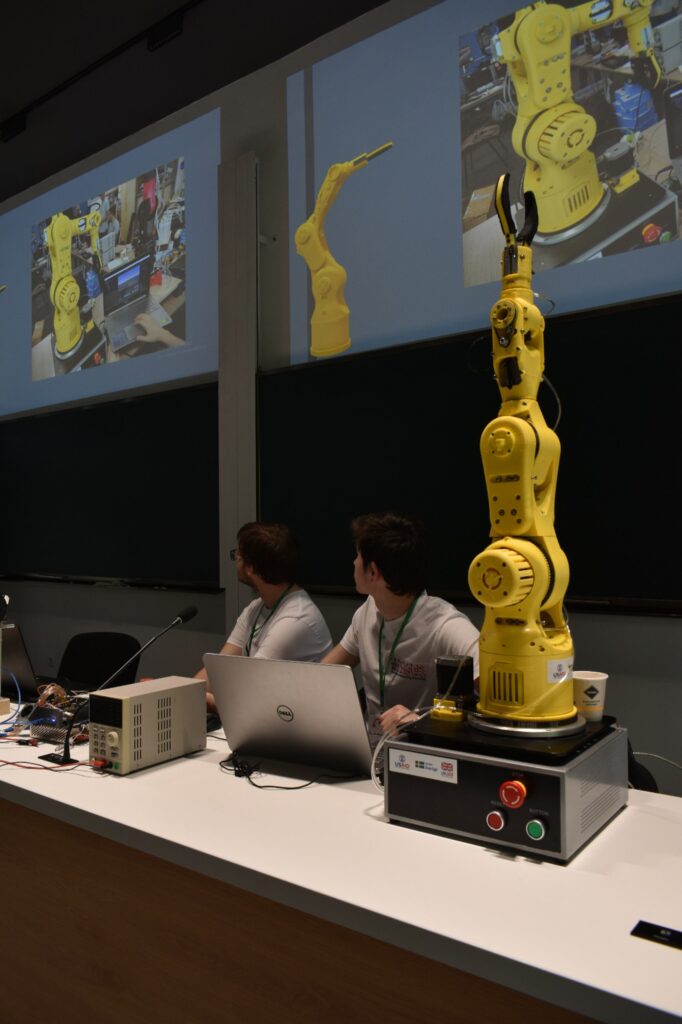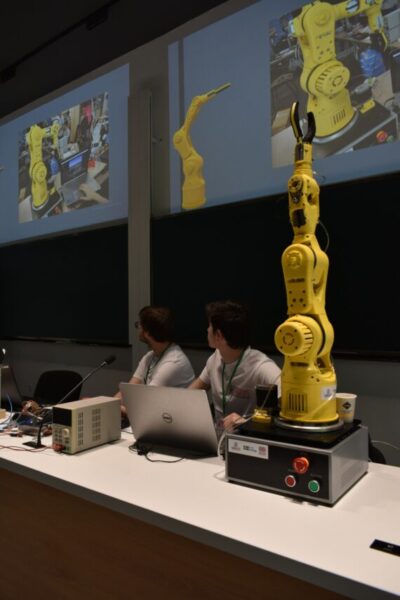Innovation does not stand still. In today’s world, robotic technologies are rapidly advancing, with robotic control emerging as a key field. Collaborative and programmable robotic arms enable the execution of a wide range of automated tasks while also supporting interaction with humans and their environment. Process automation greatly simplifies the development of complex projects. This technology allows robots, working alongside and guided by humans, to perform diverse instructions across nearly all areas of autonomous production.

Collaborative robotics relies on sensor technology, algorithms, and control systems to provide robots with the ability to interact with their environment and to work alongside humans. For example, a robot can be used in cooperation with a person to handle components in the assembly of a product, rather than performing tasks in a purely mechanized manner.
In 2019, the Micro Lab Engineering Club launched an initiative to organize a mechatronics bootcamp consisting of a series of weekly workshops, during which teams of engineers built a collection of 10–15 robotic arms. The bootcamp lasted for one and a half months, giving young participants the opportunity to design and build their own robotic arm from scratch. They received electronic components, motors, and 3D printing materials, and in the end, the completed robotic arms were programmed to solve a series of tasks.
Since we're discussing robotic arms, what exactly is one? A robotic arm is a programmable mechanical device with functions similar to those of a human arm. These mechanisms have a wide range of applications, from engineering and automobile assembly to medicine—for instance, in procedures such as open-heart surgery.
Yet progress did not stop there. In 2022, two articulated robotic arms were acquired with funding from the FTA and USAID programs. Through internship initiatives, other young participants had the opportunity to explore the detailed structure of the arms and to develop their own programs to control the movement of each joint. Their achievement was reaching automation at level 0, where they learned G-code technologies (the programming language for numerically controlled devices) and made it possible to operate the robotic arm using a script and a joystick.
It is important to remember that these robotic arms cannot fully replace humans, as they still require programming and programmers to control them. Moreover, while they are well-suited for performing repetitive tasks with ease, they are not yet capable of handling complex tasks, which demand artificial intelligence and advanced algorithms.
Today, technology is developing rapidly, making it necessary to adapt and expand our knowledge in the field of mechatronics in order to meet the changing demands of the market. Engineers must remain open to new technologies and learn how to use them both effectively and safely.
Thus, progress continues to advance. There already exists the capability to handle materials and to reduce the amount of physical force required for certain repetitive tasks, such as bending and twisting. The main advantage of using robotic arms lies in their far greater precision compared to the human factor, which both decreases execution time and increases accuracy.
If you are passionate about mechatronics, join the Mechatronic Systems Program! Here, we offer training and educational opportunities that will help you grow and apply your new knowledge in practice.
Be the one in control, everything can be achieved with the help of technologies!


